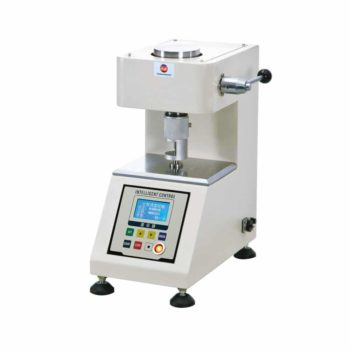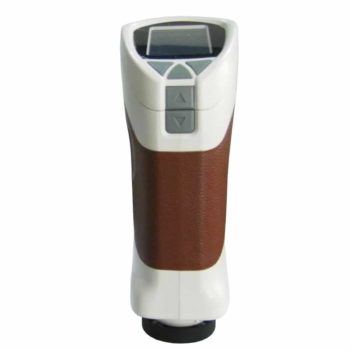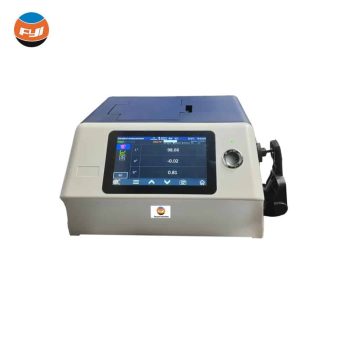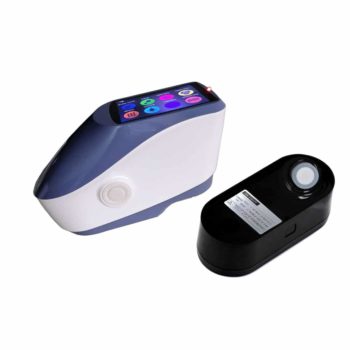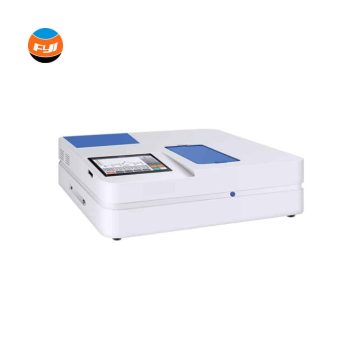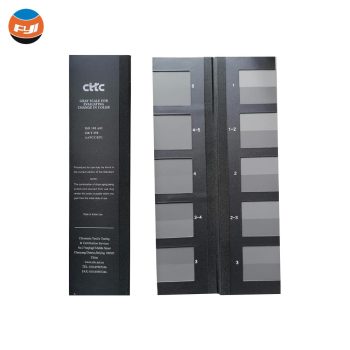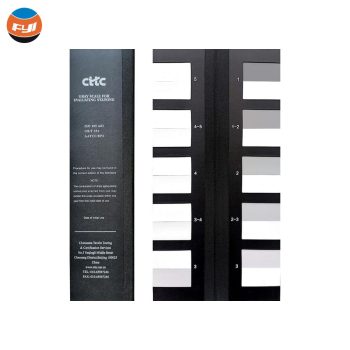Showing 17–22 of 22 results
Colour Fastness Tester generally includes Light fastness, Weather fastness, Washing Fastness, Rubbing Fastness, Perspiration Fastness, Non-chlorine Bleaching Fastness, Saliva Fastness, etc.
They are widely used in textile factory, our company are the main supplier and manufacturer in China, with its good price, lots of customer buy from us, there are many orders for sale every month.
Color fastness meaning
Textiles will be exposed to a variety of external factors during the use, such as: washing, sunlight, friction, sweat stains, ironing, and other finish processes. The color fastness refers to the resistance of textile colors to effects such as color change or transfer during process and use.
How to judge the different color fastness grade?
The evaluation is based on the visual contrast color difference between the tested sample and the original sample. General color fastness of textiles is graded by color change gray scale and staining gray scale. And light fastness grading adopt blue wool light fastness standard and color change gray scale.
Color fastness classification
Color fastness is an important evaluation of textile quality index. Because the processing and use conditions of textiles are very different, so the current test methods are usually based on the environment and conditions of application, simulation test or comprehensive test to get the evaluation of color fastness. Therefore, the test methods for color fastness are very extensive.
Below we will discuss the 5 most common used color fastness testing:
- Color fastness to washing
- Color fastness to light
- Color fastness to rubbing
- Color fastness to perspiration
- Color fastness to hot pressing
Types of color fastness and required testing machine
Color fastness to washing
The color fastness to washing test of textile is to sew the sample onto the lining fabric to form a composite sample, put it into the washing liquid at a certain temperature, impregnate and wash it according to the specified time under mechanical agitation, and then after washing and drying, use the gray scale to evaluate the color change of the sample and the stain grade of the lining fabric. This testing requires a SW SERIES WASHING TESTER. This machine conform both ISO and AATCC standards.
Color fastness to light
Color fastness to light refers to the degree of discoloration of colored fabrics when exposed to sunlight. The test method of color fastness to light is exposing a set of reference samples along with the specimens at the same time and under the same conditions; the color fastness to light is assessed by comparing the change in color of the test specimen with that of the reference materials used. This test requires a YG611M XENON ARC TESTER, which can control the irradiance, chamber temperature and humidity and temperature of sample surface.
Color fastness to rubbing
Textiles often have to rub with other objects in the process of use, and sometimes this friction also carried out in the wet state. If the color fastness of textiles is not good, other items will be contaminated in the process of friction, so printing and dyeing textiles are required to assess the color fastness to friction. The test of textile color fastness to rubbing is to use dry or water moistened special friction cloth for color fastness (white cloth) wrapped in a column or rectangular friction head, at a certain pressure on the surface of the printed textile friction, then the color quality of the fiber surface and wear with color fibers fall off and make the friction cloth stained. The color fastness to rubbing is evaluated by the degree of staining of the friction cloth. Rubbing testing needs 3 different machines according to different standard, Y571D, Y571J and Y571A.
Color fastness to perspiration
To test the color fastness of textile to perspiration, the textile sample is formed with one or two pieces of specified lining fabric. The two samples are soaked in two kinds of test liquid, alkaline sweat and acid sweat, two liquid tests should be carried on with two set of perspiration testers; and then the excess test liquid need be removed. The combined sample is placed under a specified pressure and placed at (37± 2)℃ temperature for specified time. After drying, the discoloration of the sample and the stain of the lining fabric were evaluated with color change gray scale and staining gray scales. This test needs a set of YG631&Y902H COLOR FASTNESS TO PERSPIRATION TESTING KIT.
Color fastness to hot pressing
A specimen of the textile in contact with either one or two specified adjacent fabrics is heated by close contact with a medium which is heated to the required temperature. The change in color of the specimen, and the staining of the adjacent fabric(s), are assessed with the gray scales.
There are three methods for hot press test:
- Dry pressing: A dry specimen is pressed with a heating device at a specified temperature and pressure for a specified time.
- Damp pressing: A dry specimen is covered with a wet cotton adjacent fabric and pressed with a heating device at a specified temperature and pressure for a specified time.
- Wet pressing: The upper surface of a wet specimen is covered with a wet cotton adjacent fabric and pressed with a heating device at a specified temperature and pressure for a specified time.
YG605 SERIES SCORCH AND SUBLIMATION TESTER can be used for both three method of hot pressing.
Colour Fastness Tester generally includes Light fastness, Weather fastness, Washing Fastness, Rubbing Fastness, Perspiration Fastness, Non-chlorine Bleaching Fastness, Saliva Fastness, etc.
They are widely used in textile factory, our company are the main supplier and manufacturer in China, with its good price, lots of customer buy from us, there are many orders for sale every month.
Color fastness meaning
Textiles will be exposed to a variety of external factors during the use, such as: washing, sunlight, friction, sweat stains, ironing, and other finish processes. The color fastness refers to the resistance of textile colors to effects such as color change or transfer during process and use.
How to judge the different color fastness grade?
The evaluation is based on the visual contrast color difference between the tested sample and the original sample. General color fastness of textiles is graded by color change gray scale and staining gray scale. And light fastness grading adopt blue wool light fastness standard and color change gray scale.
Color fastness classification
Color fastness is an important evaluation of textile quality index. Because the processing and use conditions of textiles are very different, so the current test methods are usually based on the environment and conditions of application, simulation test or comprehensive test to get the evaluation of color fastness. Therefore, the test methods for color fastness are very extensive.
Below we will discuss the 5 most common used color fastness testing:
- Color fastness to washing
- Color fastness to light
- Color fastness to rubbing
- Color fastness to perspiration
- Color fastness to hot pressing
Types of color fastness and required testing machine
Color fastness to washing
The color fastness to washing test of textile is to sew the sample onto the lining fabric to form a composite sample, put it into the washing liquid at a certain temperature, impregnate and wash it according to the specified time under mechanical agitation, and then after washing and drying, use the gray scale to evaluate the color change of the sample and the stain grade of the lining fabric. This testing requires a SW SERIES WASHING TESTER. This machine conform both ISO and AATCC standards.
Color fastness to light
Color fastness to light refers to the degree of discoloration of colored fabrics when exposed to sunlight. The test method of color fastness to light is exposing a set of reference samples along with the specimens at the same time and under the same conditions; the color fastness to light is assessed by comparing the change in color of the test specimen with that of the reference materials used. This test requires a YG611M XENON ARC TESTER, which can control the irradiance, chamber temperature and humidity and temperature of sample surface.
Color fastness to rubbing
Textiles often have to rub with other objects in the process of use, and sometimes this friction also carried out in the wet state. If the color fastness of textiles is not good, other items will be contaminated in the process of friction, so printing and dyeing textiles are required to assess the color fastness to friction. The test of textile color fastness to rubbing is to use dry or water moistened special friction cloth for color fastness (white cloth) wrapped in a column or rectangular friction head, at a certain pressure on the surface of the printed textile friction, then the color quality of the fiber surface and wear with color fibers fall off and make the friction cloth stained. The color fastness to rubbing is evaluated by the degree of staining of the friction cloth. Rubbing testing needs 3 different machines according to different standard, Y571D, Y571J and Y571A.
Color fastness to perspiration
To test the color fastness of textile to perspiration, the textile sample is formed with one or two pieces of specified lining fabric. The two samples are soaked in two kinds of test liquid, alkaline sweat and acid sweat, two liquid tests should be carried on with two set of perspiration testers; and then the excess test liquid need be removed. The combined sample is placed under a specified pressure and placed at (37± 2)℃ temperature for specified time. After drying, the discoloration of the sample and the stain of the lining fabric were evaluated with color change gray scale and staining gray scales. This test needs a set of YG631&Y902H COLOR FASTNESS TO PERSPIRATION TESTING KIT.
Color fastness to hot pressing
A specimen of the textile in contact with either one or two specified adjacent fabrics is heated by close contact with a medium which is heated to the required temperature. The change in color of the specimen, and the staining of the adjacent fabric(s), are assessed with the gray scales.
There are three methods for hot press test:
- Dry pressing: A dry specimen is pressed with a heating device at a specified temperature and pressure for a specified time.
- Damp pressing: A dry specimen is covered with a wet cotton adjacent fabric and pressed with a heating device at a specified temperature and pressure for a specified time.
- Wet pressing: The upper surface of a wet specimen is covered with a wet cotton adjacent fabric and pressed with a heating device at a specified temperature and pressure for a specified time.
YG605 SERIES SCORCH AND SUBLIMATION TESTER can be used for both three method of hot pressing.
